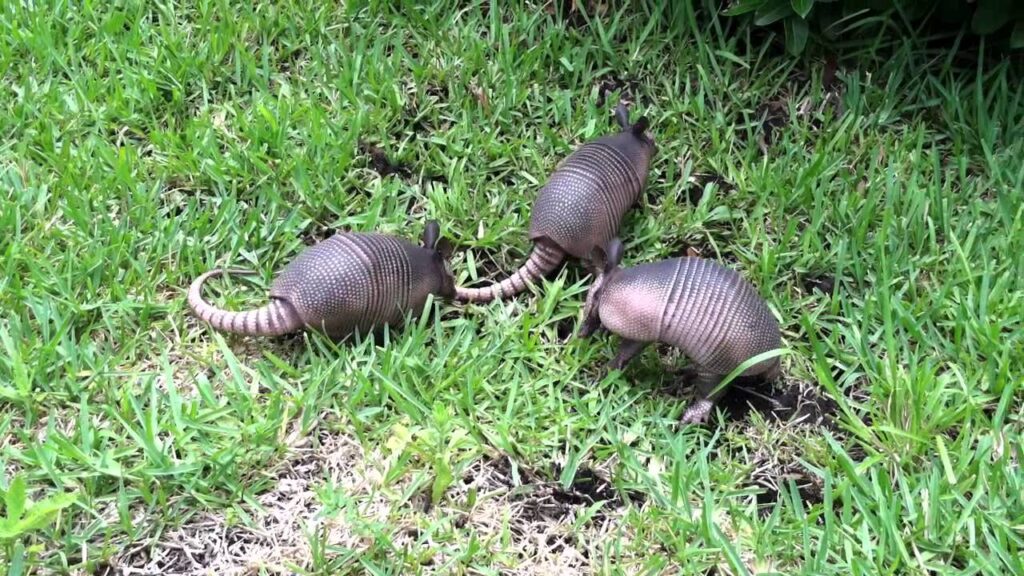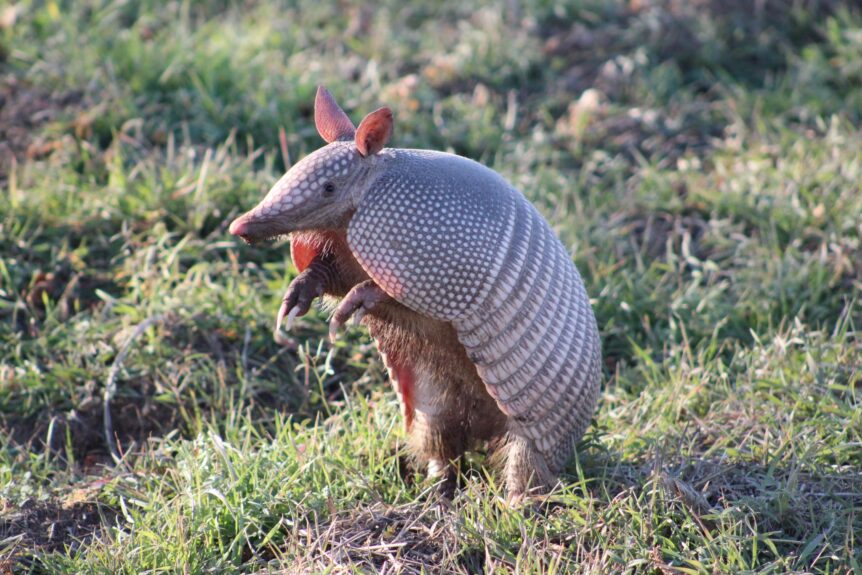We Texans love to wax sentimental about our armadillos. In Gary P. Nunn’s song, the chorus intones: “I want to go home with the armadillo, good country music from Amarillo and Abilene…” and throw in the Texas Hill Country, too!
I love “dillers”. They are little dim bulbs that snuffle and grouse. You will hear them, but they don’t hear you until you are close enough to grab their tail. I know from experience you’ll never quite catch one that way! Once they start to move, they can haul! And if they get those long toenails into an earthy hole, the force of all your weight won’t pry them loose.
Armadillos have been around in Texas and Mexico
Our armadillos are the nine-banded variety (Dasypus novemcinctus), gray in color, a shell with nine bands the across their back from head to tail, and soft, hairy flesh underneath. They have long, pointy noses, long claws like fingernails, and super powers beyond belief.
Armadillos have super powers!
What they lack in vision and hearing, they more than make up for with their keen sense of smell and breath control.
They find their food by sniffing around for it.
An armadillo can inflate its belly and intestines long enough swim across the river, right on top of the water. Or it can hold its breath for up to *six minutes* and *walk across* on the bottom of the river! Truth.
Holding your breath that long can be handy when your nose is digging in the ground as much as dillos do!
Dillo quadruplets????
Armadillos give birth once a year to four identical offspring: either all males, or all females. The babies look exactly like the adults except smaller, and for a few days they are softer. They generally hang around mama until they’re big enough to strike out on their own.
Dillos have elaborate burrows underground, where they spend most of the day. They emerge at night to look for food: insects (particularly ants and termites), grubs, roots, fungi and more.

Dillers can live 12 to 15 years.
Armadillos have been prominent in Texas and Mexico for centuries. The Aztecs in Mexico called them “turtle-rabbits.” In the South American Andes, their shells were used for making charangos, a lute instrument.
Decades ago in our area, armadillos were “harvested” and made into purses and other novelty items for sale. As a kid, I remember seeing similar curios in markets south of the border, too. That’s a different sort of appreciation, for sure.
And by the way, our beloved creature is marching slowly northward, all the way up to Kansas by now. Our “home with the armadillo” is getting more and more family members. So now lots of Americans (North and South) can sing along!








Comments
Jane you are such a talented writer ! Glad to know ?